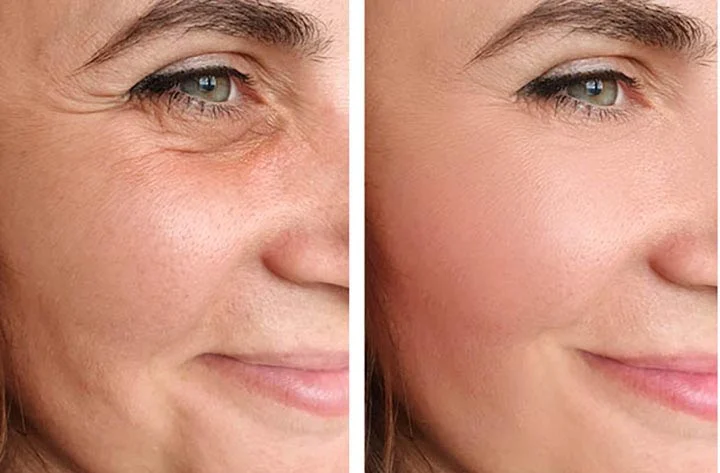A facelift, or rhytidectomy, is a surgical procedure designed to address signs of aging in the face and neck. It is commonly chosen by individuals seeking to rejuvenate their appearance by tightening sagging skin, smoothing wrinkles, and restoring a more youthful contour to the face.
Common Goals of a Facelift:
-
Sagging Skin:
- Lift and tighten sagging skin in the midface, jowls, and neck.
-
Wrinkles and Lines:
- Smooth out deep lines, folds, and wrinkles, especially around the eyes, mouth, and nose.
-
Facial Contour:
- Restore a more defined and youthful facial contour by addressing laxity in the skin and underlying tissues.
-
Jowls:
- Address the development of jowls along the jawline.
-
Neck:
- Improve the appearance of a sagging or loose neck.
Facelift Procedure:
-
Consultation:
- A thorough consultation with a qualified plastic surgeon is conducted to discuss the patient's goals, assess facial anatomy, and determine the best approach for the facelift.
-
Anesthesia:
- Facelift surgery is typically performed under general anesthesia or intravenous sedation, ensuring the patient is comfortable and unaware during the procedure.
-
Incisions:
- Incision placement depends on the specific goals of the facelift and the technique used. Common incision locations include along the hairline, around the ears, and possibly extending into the lower scalp.
-
Lifting and Tightening:
- The surgeon lifts and tightens the underlying facial muscles and tissues, addressing areas of sagging and laxity.
-
Fat Repositioning or Removal:
- In some cases, fat may be repositioned or removed to enhance facial contour.
-
Skin Redraping:
- Excess skin is redraped over the lifted and repositioned tissues, and any excess is trimmed.
-
Incision Closure:
- The incisions are closed with sutures or other closure techniques, and dressings are applied.
Recovery and Aftercare:
-
Postoperative Period:
- Swelling, bruising, and some discomfort are common in the immediate postoperative period. Pain medication and cold compresses can help manage these symptoms.
-
Dressings and Bandages:
- Patients may have dressings or bandages on the incision sites, and a compression garment may be recommended to minimize swelling.
-
Rest and Limitations:
- Rest and limitations on physical activities, especially those that may strain the facial tissues, are typically advised during the initial recovery period.
-
Follow-up Appointments:
- Patients have follow-up appointments with the surgeon to monitor the healing process, remove stitches, and address any concerns.
-
Return to Normal Activities:
- While individuals can usually return to work and normal activities within a few weeks, strenuous activities should be avoided for several weeks.
Considerations:
-
Realistic Expectations:
- It's important for individuals to have realistic expectations and understand that the final results of a facelift may take time to fully manifest.
-
Potential Risks:
- As with any surgical procedure, facelifts carry risks, including infection, bleeding, or unfavorable scarring. These risks are minimized when the procedure is performed by a skilled and experienced surgeon.
-
Choosing a Surgeon:
- Selecting a board-certified and experienced plastic surgeon is crucial for achieving safe and satisfactory results.
-
Combined Procedures:
- Some individuals choose to combine a facelift with other procedures, such as eyelid surgery or brow lift, to achieve a more comprehensive rejuvenation.
A facelift is a significant surgical procedure, and the approach varies based on each patient's unique anatomy and goals. If you are considering a facelift, schedule a consultation with a qualified surgeon to discuss your concerns, understand the potential outcomes, and determine if this procedure is the right choice for you.



